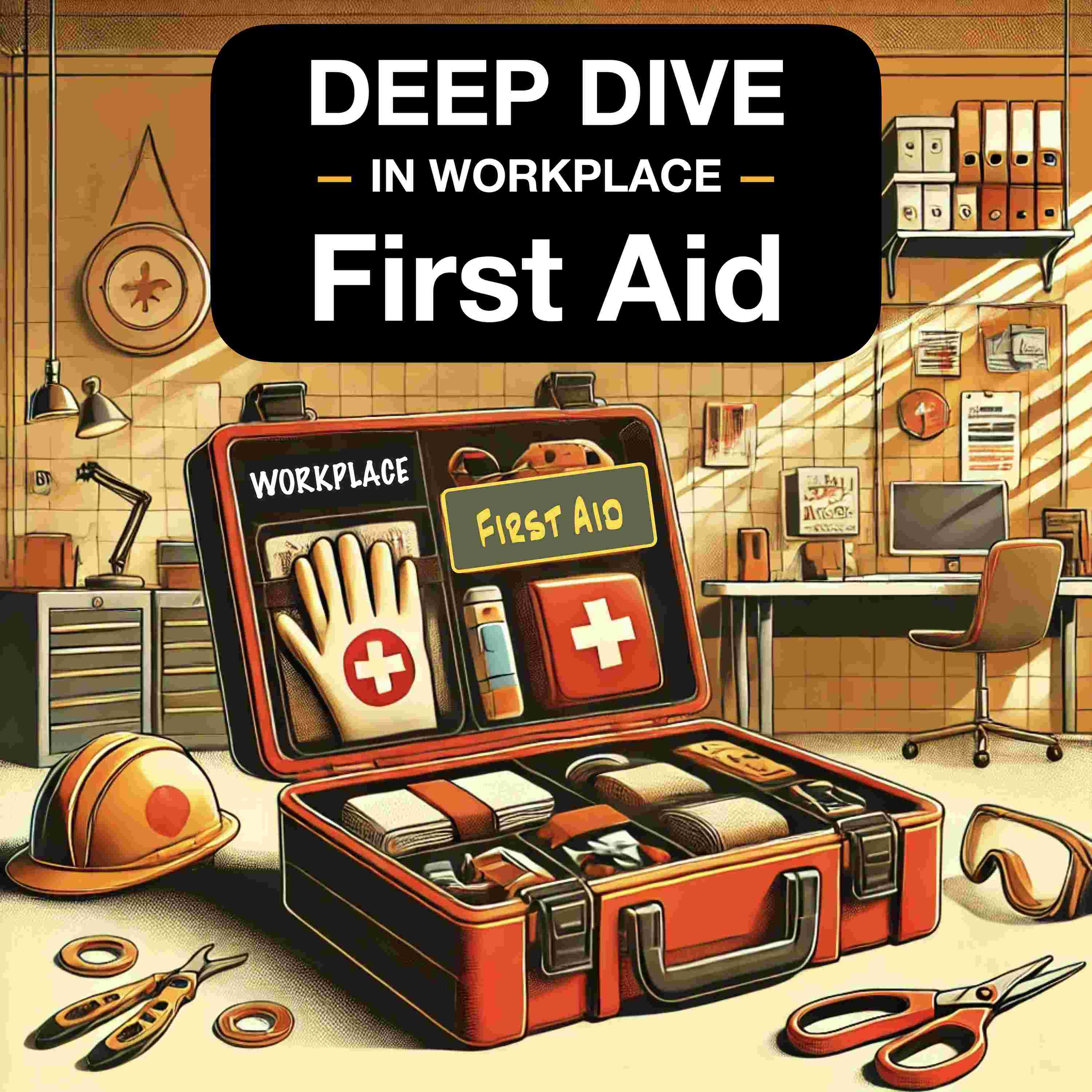

Podcast Episode 4:
Clinical Approach to Medical and Traumatic Emergencies
Breifing Doc
Podcast Episode 4: Summary and Description
Title: “Clinical Approach to Medical and Traumatic Emergencies”
Description:
In Episode 4 of Deep Dive in Workplace First Aid, we delve into the clinical approach outlined in the CNESST’s Workplace First Aid Guide for managing medical and traumatic emergencies. This episode highlights the primary assessment (ABC: Airway, Breathing, Circulation) as a critical step in identifying life-threatening conditions.
We also discuss the secondary assessment, which includes gathering information using the SAMPLE framework and taking vital signs to guide further intervention. From specific protocols for medical and traumatic issues to the emphasis on cervical protection in trauma cases, this episode equips you with the tools to act decisively in emergencies.
Finally, we explain how to deliver an effective verbal report to emergency services, ensuring seamless communication and optimal care for the victim.
Tune in to enhance your understanding of this essential clinical approach to workplace first aid!
Theme:
Evaluation and management of medical and traumatic issues during workplace emergencies, based on the CNESST’s Workplace First Aid Guide (9th Edition).
Key Points:
1. Primary Assessment (ABC)
• The initial step for all medical and traumatic emergencies.
• Sequence: L’ABC
• L: Verify the victim’s level of consciousness.
• A (Airway): Open the airway (head tilt for medical issues, jaw thrust for trauma).
• B (Breathing): Check for breathing and assess its quality.
• C (Circulation): Check circulation (pulse, skin color).
• For cardiopulmonary arrest, the sequence becomes L’CAB, starting with chest compressions.
Quotes:
• “The primary assessment must be performed whenever a medical or traumatic issue is identified.”
• “In a cardiopulmonary resuscitation (CPR) scenario, the sequence begins with chest compressions (L’CAB) in the absence of normal breathing or if agonal breathing is present.”
2. Secondary Assessment
• Performed after stabilizing the patient’s condition in the primary assessment.
• Components:
• Information Gathering (SAMPLE): Signs and Symptoms, Allergies, Medications, Past Medical History, Last Meal, Events leading to the emergency.
• Vital Signs Check: Respiratory rate, pulse.
• Physical Examination: Comprehensive inspection and palpation in trauma cases.
Quote:
• “The secondary assessment involves information gathering, checking vital signs, and performing a full physical examination in trauma cases.”
3. Intervention Protocols
• Protocol 1.1 for medical emergencies.
• Protocol 1.2 for trauma cases.
• Interventions must follow the prescribed sequence and adapt to observed signs and symptoms.
Quote:
• “The responder must use the intervention protocol that aligns with the observed signs and symptoms during the primary and secondary assessments.”
4. Reevaluation and Verbal Reporting
• Continuous reevaluation of the patient’s condition (L’ABC).
• Provide a concise and clear verbal report to emergency services.
5. Dignity and Hypothermia
• Always respect the dignity of the patient.
• Prevent hypothermia during care.
Quote:
• “The ‘Attention! Dignity and hypothermia’ reminder underscores the importance of respecting the patient’s dignity and ensuring their comfort.”
Conclusion:
This episode emphasizes the importance of mastering the primary and secondary assessments, following specific protocols, and maintaining the dignity and safety of the victim. These foundational steps ensure effective and compassionate care during emergencies.